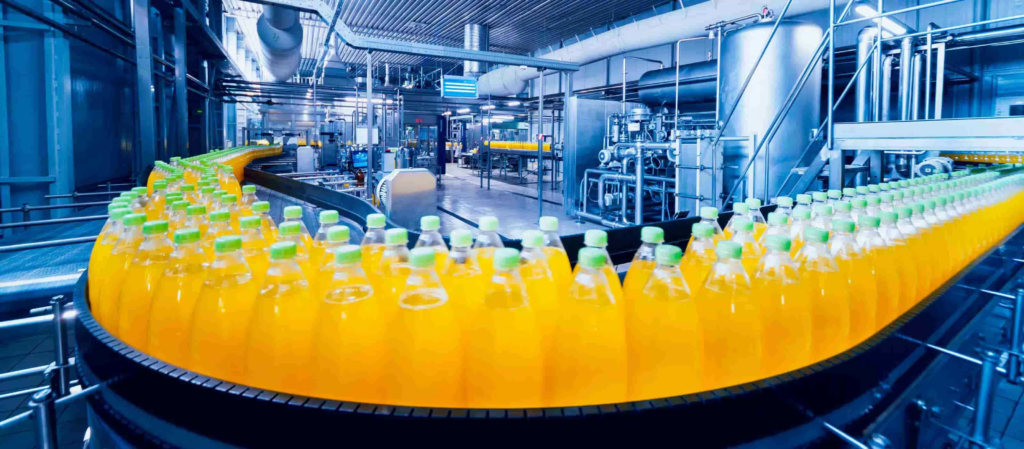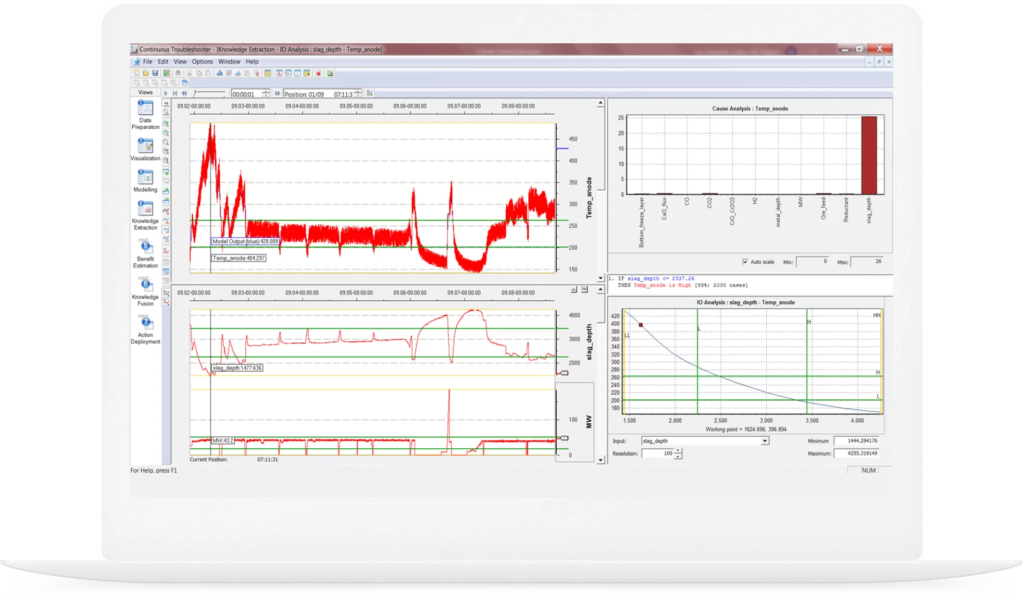
As both a manufacturer and an expert in digital transformation technologies, GE understands many of the decisions your manufacturing team must make every day. We see the ripple effect operational decisions have on short-term production agility, as well as the long-term opportunity current challenges present.
Working with F&B and CPG companies around the world, we’ve compiled a list of the seven most critical actions your operation should consider right now. The decisions you make matter to both short-term profitability but also long-term brand viability.
1. Reduce variety for in-demand products
During the pandemic, consumers became less picky about certain products. With today’s rising inflation prices, shoppers continue to look for affordable options.
This is good news for manufacturers who are looking to accelerate throughput for in-demand products. Reducing the variety of products coming off the line lowers line changeover time and simplifies packaging while still meeting customer expectations.

Food & Beverage and CPG manufacturers need to accelerate throughput for in-demand products.
2. Consider new distribution channels
Even as the pandemic fades into the rearview mirror, processing plants must still consider the raw material and packaging solutions available to them and determine what else they can produce that consumers need right now.
Shifting products isn’t the only option. In some cases, demand remains but has shifted to new distribution channels. For example, a large cheese processor could return to producing bulk products for restaurants while continuing to deliver goods to the retail customers that emerged during the Covid-19 outbreak.
3. Diversify raw material supply chain
Access to raw materials is foundational for production agility. Equipment can run harder and longer, but if the raw materials needed aren’t available, production is stalled.
One way to combat the risk of supply chain disruptions is to diversify suppliers, increasing the chances of maintaining production agility without having to store excess inventory.
4. Leverage machine learning and data analytics
It’s tempting to focus on the immediate. Yet, we know that the decisions made today will have a long-term impact on your brand. It’s critical to make those decisions with as much insight as possible.
Predictive analytics and machine learning play a critical role in modeling the actions and consequences of actions in a way that is always valuable, but it is critical during periods of rapidly growing inflation. It’s important not only to understand an operation’s OEE but to be able to break it down in a granular way to take corrective action on the plant floor.
We have had our Proficy CSense customers use its AI and machine learning analytics in a variety of ways. One international food manufacturer decreased customer complaints related to product weight by 33%, improved product quality, and decreased waste. Additionally, a pulp and paper manufacturer predicted Critical to Quality (CTQ) KPIs to improve productivity and eliminate wastewater regulatory issues. As a final example, a third company implemented an advanced process control solution to increase throughput by 10% using optimization technology.
Analytics can optimize production uptime, reduce waste, and accelerate learnings from one plant to another.

Proficy CSense uses machine learning analytics to help manufacturers optimize uptime and reduce waste.
5. Focus on production software and operational agility
Supply chain shortages and labor challenges that occurred at the height of the Covid-19 pandemic forced manufacturers to find creative ways to keep up with production demands. Maintenance schedules, reporting and training, for example, had to change while simultaneously keeping up with shifts in consumer demand.
Manufacturers should continue to focus on optimizing production/packaging agility. and prepare for future demand changes. This includes implementing rapid line changeover solutions and putting data more easily into the hands of operators for quick decision making.
6. Enable remote workforce
A good deal of manufacturing staff must work on-site to complete their job, but some parts of the workforce, given the right tools and connectivity, could work from home to reduce the spread of illness and create an improved work-life balance.

Software that enables remote working can improve work-life balance and worker retention.
7. Accommodate knowledge transfer without human interaction during shift changes
Shift changes are an important transition time. Valuable information is transmitted between personnel as one shift takes over for another. In the past, much of that information was provided informally in conversations between individuals.
The Covid-19 pandemic taught us to protect employees and reduce the risk of production schedule interruption due to illness by eliminating in-person hand-offs.
Detailed reporting and the use of notes in the form of digitized operator logs can effectively transfer knowledge in the absence of informal mechanisms. Our advice is always to invest in a digitalization technology that integrates with as many of your existing plant systems as possible. It would come as no surprise to you that our newest solution, Proficy Operations Hub, a manufacturing operations intelligence software, efficiently and effectively integrates with as many of your existing plants as needed.
While the camaraderie of in-person shift changes will be missed, digitized hand-offs offer long-term value. A recorded history allows the processor to conduct analysis and results in a greater likelihood that lessons learned can be shared broadly across the organization.
The change required to navigate the global pandemic was deeply challenging, but it also provided the opportunity to focus on production agility in a way rarely experienced. The changes made will have a lasting, positive impact on operational efficiency and safety as we move into the post-pandemic era. The organizations that became more agile during the pandemic uncovered new opportunities to reduce waste, decrease downtime, increase throughput, and optimize production changes.
Steve Pavlosky
Vice President, Product Management, GE Digital
Steve Pavlosky is the Vice President of Product Management for GE Digital’s Automation, MES, Historian and Industrial Analytics software. With more than 30 years serving in automation and industrial data management, Steve is an Industrial Internet pioneer and firm believer in the value and power of data. His career spans the introduction of GE’s CIMPLICITY HMI/SCADA software to leading the company’s edge-to-cloud connectivity device portfolio. Having worked with hundreds of customers, Steve is passionate about enabling organizations to get the most performance and reliability from their assets – which starts with secure and efficient collection and storage, contextualizing asset data, and distributing data to the users and applications that derive value from the data.
